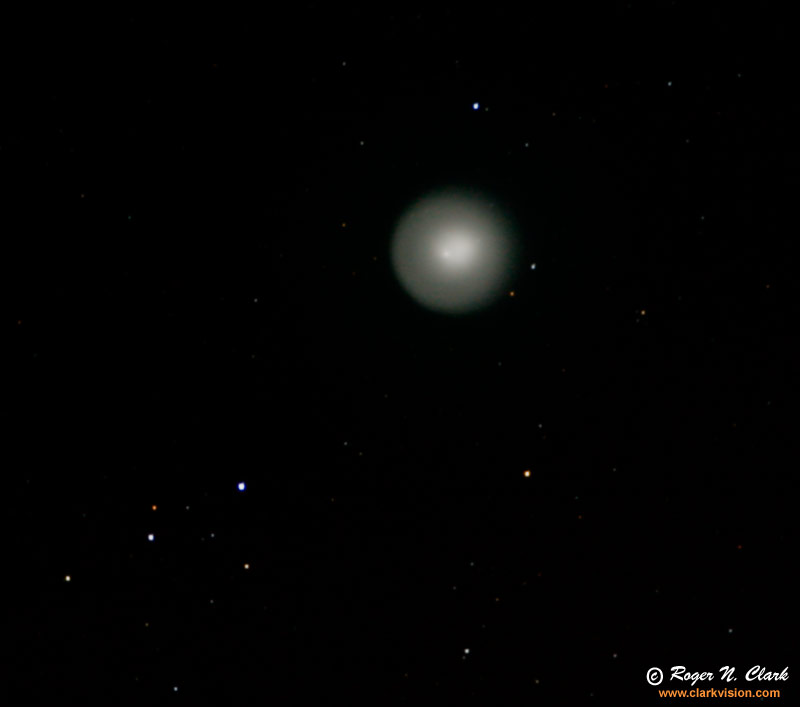| Home | Galleries | Articles | Reviews | Best Gear | New | About | Contact | Gallery Index | Previous |
Next |

| Home | Galleries | Articles | Reviews | Best Gear | New | About | Contact | Gallery Index | Previous |
Next |

Periodic comet Holmes underwent a 17-million fold increase in brightness in mid-October. It rapidly became visible to the unaided eye in light polluted cities. The cream color is due to dust, and the hints of green are due to carbon and cyanide.
Technical. Canon 1D Mark II digital camera with 500 mm f/4 L IS lens at f/4. The image is the sum of 36 one-second exposures at ISO 1600 from a stationary tripod. The short exposures were necessary to prevent trailing of star images due to the Earth's rotation. Dark frame images were subtracted, the images aligned, and averaged using sigma clipped average in ImagesPlus. The image was then stretched in ImagesPlus using digital development and touched up with curves in Photoshop.
The Exposure Factors, CEF, CEFA are measures of the relative amounts of light received from a subject. It can be used to fairly compare wildly different lens/telescope apertures and exposure times. For this image:
Plate scale is 3.4 arc-seconds/pixel in the original, and 4.8 arc-seconds per pixel in this cropped and slightly reduced image.
Please visit my Extensive Articles on Photography .
Keywords to this image = astrophoto-1 comet digital_astro
Image ID: comet.holmes.c10.31.2007.36s2.d-c800.jpg
| Home | Galleries | Articles | Reviews | Best Gear | Science | New | About | Contact |
Last updated December 20, 2025